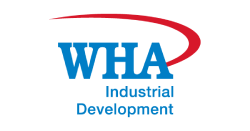記事
SPECIAL ECONOMIC ZONE
18/09/2019

Ms. Jareeporn Jarukornsakul.
Chairman and Group CEO
WHA Corporation PCL
In many countries, Special Economic Zone (SEZs) have become an economic tool to stimulate business opportunities and attract foreign investors. The main goal of SEZs is to use different economic policies tailored to give flexibility for new businesses.
The World Investment Report 2019, published by United Nations Conference on Trade and Development (UNCTAD), revealed that there are a total of 5,383 SEZs worldwide. China topped the list with 2,543 SEZs. The Philippines came second with 528 SEZs, followed by India (373 SEZs), North America (262 SEZs) and Russia (130 SEZs).
The growth of multinational manufacturing investments and global supply chain connectivity from the end of the 1990s until the beginning of 2000s gave birth to significantly large numbers of SEZs in developing countries. In the CLMVT region (Cambodia, Laos, Myanmar, Vietnam and Thailand), Vietnam has been using SEZs as an investment stimulus since its economic reforms were initiated in 1986.
Laos also put a lot of emphasis on SEZs, aligned with the Belt and Road Initiative of its neighbor, China. To date, Laos now has 10 SEZs and EEZs (Exclusive Economic Zones) which are fully operational.
Earlier this year, Myanmar announced its new Kyaukphyu Special Economic Zone – KPSEZ, the country’s third SEZ. Following the Belt and Road strategy, analysts expect China to invest heavily in KPSEZ, in order to gain direct access to the Indian Ocean and open its business doors to the Middle East market, along with other regions in the future.
Enjoying greater privileges than regular economic zones, SEZs are more flexible in terms of regulations regarding investments, taxation, labor and technological development. Thailand has also adopted SEZs to attract major investments. Built as a World Class Economic Zone, Thailand’s Eastern Economic Corridor (EEC) is fully prepared to support super clusters and 12 target industries. Strategically located in the ASEAN logistics hub, the EEC provides well-connected infrastructure and easy access to its neighboring countries in the region.
Announced in 2018, the Eastern Special Development Zone Act for the EEC is the essential enabler of zone expansion, using SEZ’s Area-Based Development concept. This new act plays an important role in ensuring that the zones will enhance economic development, infrastructure, innovative technology, regulations, society and human resources. The next important step would be to gain the support of all sectors to shape the EEC into an effective model, broadening sustainable success in other areas including the recently-announced SEZs in 10 different provinces, among others. In line with the Thailand 4.0 initiative, these high-potential economic areas will boost the country’s economy, technology and talent development. It will also aim to avoid the middle-income trap in order to ramp up Thailand’s competitiveness and create sustainable growth.

